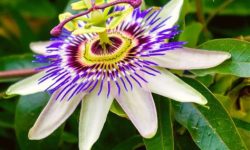The Best White Tea Brands to Try for Superior Taste and Quality
Introduction:
White tea, a delicately flavored and subtly nuanced beverage, has been gaining popularity among tea enthusiasts around the globe. With its rich history and unique production process, understanding the origins of white tea is essential to appreciate its distinct qualities. Choosing the right white tea can be a daunting task, but considering certain factors can help you make an informed decision. In this blog post, we will explore some of the top white tea brands known for their exceptional quality and craftsmanship. Additionally, we will dive into the world of white tea flavors and aromas, highlighting some remarkable varieties that leave a lasting impression. Finally, we will delve into innovative brewing techniques to help you enhance your white tea experience and savor its delicate flavors to the fullest. Join us as we embark on this delightful journey into the world of white tea.
Understanding white tea: history and production
Understanding White Tea: History and Production
White tea is a type of tea that is minimally processed and made from the buds and young leaves of the Camellia sinensis plant. It is known for its delicate flavor, mild aroma, and pale color. In order to truly appreciate white tea, it is important to understand its history and production process.
History of White Tea
White tea has a rich history that dates back to ancient China. Legend has it that white tea was first discovered during the Tang Dynasty (618-907 AD) by the Emperor Hui Zhong. The emperor, a tea enthusiast, noticed that the young leaves and buds of the tea plant had a unique appearance and fragrance. Intrigued, he ordered his tea masters to preserve these leaves and create a special tea. Thus, white tea was born.
Production Process
The production process of white tea is what sets it apart from other types of tea. Unlike green, black, or oolong tea, white tea undergoes minimal oxidation and processing. The leaves and buds are carefully plucked by hand during the early spring, when they are at their peak freshness. These young leaves and buds are then gently withered and dried in the sun or in a controlled indoor environment.
The List of Factors to Consider
- Origin: Consider where the white tea is grown. Certain regions, such as Fujian province in China, are known for producing high-quality white tea.
- Grade: White tea is available in various grades, ranging from Silver Needle (the highest grade) to White Peony. Consider what grade suits your taste preference and budget.
- Flavor: White tea can have a subtle and delicate flavor profile. Some teas may have notes of floral, honey, or fruity undertones. Consider what flavors appeal to you.
Exploring the Top White Tea Brands Globally
| Brand | Origin |
|---|---|
| Silver Needle | Fujian, China |
| White Peony | Fujian, China |
| Bai Mu Dan (White Peony) | Fujian, China |
| Longevity Eyebrow | Anhui, China |
Spotlight on Exceptional White Tea Flavors and Aromas
White tea offers a range of exceptional flavors and aromas that are worth exploring. Some popular white tea flavors include jasmine, peach, apricot, and even chocolate. These flavors are often naturally infused with the tea leaves, making white tea a unique and enjoyable beverage.
Innovative Brewing Techniques to Enhance White Tea Experience
Brewing white tea can be an art in itself, and there are various techniques you can try to enhance your white tea experience. For example, using water that is slightly below boiling temperature (around 175-185°F) can help bring out the subtle flavors of the tea. Additionally, steeping white tea for a shorter duration (around 2-3 minutes) can prevent the tea from becoming overly bitter.
Factors to consider when choosing white tea
When it comes to choosing white tea, there are several important factors to consider. Taste is one of the most significant aspects to take into account. White tea offers a delicate and subtle flavor profile, often described as floral, sweet, and slightly fruity. Some white teas may have a slightly grassy or vegetal taste, while others may have a honey-like sweetness. It is essential to think about your personal taste preferences and choose a white tea variety that aligns with them.
Quality is another crucial factor to keep in mind when selecting white tea. The quality of white tea can vary significantly, depending on factors such as the tea leaves used, the processing methods, and the origin. High-quality white tea will have young, unopened buds, and possibly some smaller leaves. The leaves should be whole, unbroken, and covered with white downy hairs, which indicate freshness. It is advisable to purchase white tea from reputable tea brands or specialty tea shops to ensure the highest quality.
Origin plays a significant role in the flavor and characteristics of white tea. Different regions produce white tea with distinct flavors and aromas. For example, Chinese white teas, such as Silver Needle and Bai Mu Dan, are known for their delicate and floral taste, while Darjeeling white teas from India offer a muscatel flavor with hints of citrus. Understanding the origin of the white tea and its unique characteristics can help you make an informed decision while choosing the type of white tea that appeals to you the most.
| Factors to Consider | Summary |
|---|---|
| Taste | Choose a flavor profile that matches your preferences. |
| Quality | Opt for high-quality white tea with whole, unbroken leaves. |
| Origin | Explore different regions for unique flavors and aromas. |
Exploring the top white tea brands globally
When it comes to white tea, there are numerous brands that have gained global recognition for their exceptional quality and exquisite flavors. In this blog post, we will dive into the world of white tea and explore some of the top brands that have captivated tea lovers across the globe.
1. Silver Needle Tea:
Silver Needle Tea is often considered the epitome of fine white teas. It is harvested from the first flush of the tea plant, consisting of only the young buds. This delicate tea is known for its sweet and light flavor, with hints of melon and honey. The leaves are hand-picked with great care, making it one of the most sought-after white tea brands worldwide.
2. Bai Mu Dan (White Peony):
Bai Mu Dan is another popular white tea brand known for its exquisite taste and beautiful appearance. It is made from the young leaves and unopened buds of the tea plant. This tea offers a smooth and mellow flavor, with notes of fresh flowers and a subtle sweetness. Bai Mu Dan is highly regarded for its health benefits and is a favorite choice amongst white tea enthusiasts.
3. Longevity Eyebrow (Shou Mei):
Longevity Eyebrow, also known as Shou Mei, is a slightly darker variety of white tea. It is made from the larger leaves and mature buds of the tea plant. This tea has a robust flavor profile, with earthy undertones and a hint of sweetness. Shou Mei is widely recognized for its antioxidant properties and is cherished by tea connoisseurs around the world.
In addition to these top white tea brands, there are many other exceptional varieties available, each with its own unique flavor profile and characteristics. Exploring the diverse world of white tea can be a delightful adventure for tea enthusiasts, as they discover their personal favorites and appreciate the craftsmanship that goes into producing these high-quality teas.
Spotlight on exceptional white tea flavors and aromas
When it comes to tea, there is a wide variety of flavors and aromas to explore. Among them, white tea stands out for its exceptional taste and aroma profiles. This delicate tea has gained popularity not only for its health benefits but also for its unique and exquisite flavors. In this blog post, we will dive into the world of white tea and shed light on some of the exceptional flavors and aromas that make it a favorite among tea enthusiasts.
One of the most remarkable aspects of white tea is its subtle and natural flavors. Unlike other types of tea, white tea is minimally processed, allowing the natural flavors and aromas of the tea leaves to shine through. The delicate and gentle brewing method preserves the delicate nuances of the tea, resulting in a smooth, light, and slightly sweet flavor. Whether you prefer a floral, fruity, or herbaceous taste, white tea offers a wide range of options to satisfy every palate.
When exploring the flavors and aromas of white tea, it’s important to pay attention to the variety and origin of the tea. Different regions produce white tea with unique characteristics that contribute to its distinct flavors. For example, Chinese white tea, such as Bai Hao Yin Zhen (Silver Needle) and Bai Mu Dan (White Peony), offers fragrant notes of melon, honey, and floral undertones. On the other hand, Darjeeling white tea from India exhibits muscatel flavors with hints of citrus and spices.
- Chinese white tea – Bai Hao Yin Zhen (Silver Needle)
- Chinese white tea – Bai Mu Dan (White Peony)
- Indian white tea – Darjeeling white tea
| White Tea Variety | Origin | Flavors |
|---|---|---|
| Bai Hao Yin Zhen (Silver Needle) | China | Melon, honey, floral |
| Bai Mu Dan (White Peony) | China | Mild, nutty, fruity |
| Darjeeling white tea | India | Muscatel, citrus, spices |
Furthermore, white tea can also be blended with other natural ingredients to create unique and captivating flavors. For example, white tea infused with jasmine blossoms offers a delicate floral aroma and a subtly sweet taste. Similarly, white tea blended with dried fruits like peach or apricot provides a refreshing and fruity twist to the traditional white tea flavor profile. These inventive blends allow tea enthusiasts to explore new and exciting flavors while still enjoying the gentle and soothing characteristics of white tea.
In conclusion, white tea offers a world of exceptional flavors and aromas waiting to be explored. Its delicate and natural taste, combined with the variety of options available, make it a standout choice for tea lovers. Whether you prefer the subtle floral notes of Chinese white tea or the muscatel flavors of Darjeeling white tea, there is a white tea flavor profile to suit every preference. So, why not embark on a journey of tea exploration and indulge in the exceptional flavors and aromas of white tea?
Innovative brewing techniques to enhance white tea experience
White tea is known for its delicate and subtle flavors, making it a favorite amongst tea connoisseurs. To truly enhance your white tea experience, experimenting with innovative brewing techniques can be a game-changer. These techniques not only amplify the taste and aroma but also add a unique twist to your tea rituals. In this blog post, we will dive into some exciting brewing methods that can take your white tea enjoyment to the next level.
1. Cold Brewing: Cold brewing is a popular technique that extracts the essence of white tea leaves without the use of hot water. This method involves steeping tea leaves in cold water for an extended period, typically overnight. The slow extraction process results in a smooth and less bitter tea, accentuating the natural sweetness and floral notes of white tea. Simply add white tea leaves to a container of cold water, refrigerate it, and let time work its magic. The result? A refreshing and rejuvenating cold brew white tea that is perfect for hot summer days.
2. Tea Infused Ice Cubes: Elevate your white tea experience by incorporating tea-infused ice cubes into your beverages. It’s a simple yet brilliant way to enhance the flavor and presentation of your drinks. Brew a concentrated batch of white tea and pour it into ice cube trays. Allow the tea to freeze into cubes and then add them to your preferred cold beverages. As the tea-infused ice cubes melt, they release the essence of white tea, subtly transforming the taste and appearance of your drink with every sip.
3. Gong Fu Cha: Originating from China, Gong Fu Cha is a traditional brewing method that allows for a more concentrated and flavorful white tea experience. The technique involves using a small teapot and multiple short steepings, emphasizing the infusion of the tea leaves’ full flavor profile. To practice Gong Fu Cha, add a generous amount of white tea leaves to a preheated teapot and perform quick successive infusions, gradually increasing the steeping time with each infusion. This brewing method intensifies the taste and complexity of white tea, resulting in a multi-layered and satisfying tea session.
By exploring these innovative brewing techniques, you can unlock the full potential of your white tea. Whether you prefer a refreshing cold brew, tea-infused ice cubes, or the traditional Gong Fu Cha, each of these methods offers a unique and personalized way to enjoy white tea. So, break free from the traditional hot steeping method and embark on a journey to discover the extraordinary flavors and aromas of white tea in new and exciting ways.
Frequently Asked Questions
What is the history and production process of white tea?
White tea has a rich history dating back to ancient China. Its delicate leaves are carefully handpicked and minimally processed to preserve their natural flavors.
What factors should I consider when choosing white tea?
When choosing white tea, consider the origin, grade, freshness, and flavor profile. Opt for reputable brands and look for teas that have been sourced sustainably.
Which are the top white tea brands globally?
Some of the top white tea brands globally include Silver Needle, Bai Mu Dan, Longevity Eyebrow, Yin Zhen, and Darjeeling White.
What are some exceptional white tea flavors and aromas?
White tea offers a range of flavors and aromas, including floral notes, hints of honey, subtle fruitiness, and a delicate, silky texture.
Are there any innovative brewing techniques to enhance the white tea experience?
Yes, there are innovative brewing techniques to enhance the white tea experience. Try cold brewing, gongfu style brewing, or experimenting with different water temperatures and steeping times.
What are the health benefits of white tea?
White tea is rich in antioxidants and may boost the immune system, promote healthy skin, support heart health, and improve overall well-being.
Are there any common myths or misconceptions about white tea?
Yes, there are some common myths about white tea. One of them is that it is caffeine-free, but white tea actually contains a small amount of caffeine. Another myth is that it must be steeped for a long time, while in reality, shorter steeping times are often recommended to preserve its delicate flavors.



